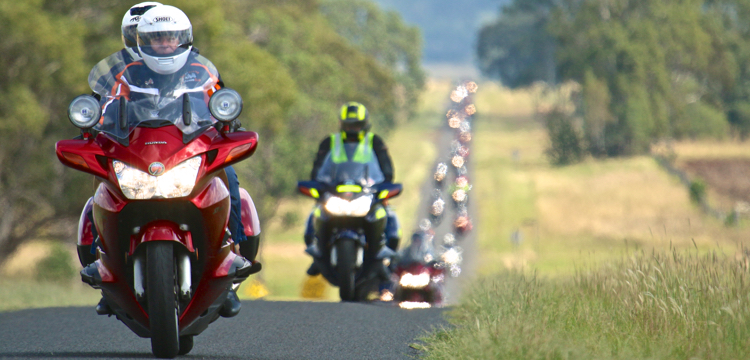
The NT1100 uses the engine and basic chassis of the Africa Twin dressed in road bike bodywork and ancillaries to create a new machine which Australian Road Rider expects to be conformable, sporty, versatile and very popular.
With Honda dropping the ST1300 and VFR800 some years ago, there’s definitely a spot in the line-up for the chain-driven NT1100 in the line-up.
Honda believes the new bike will work for everything from commuting to long-distance touring, two-up with panniers.
The engine has been re-tuned to produce more horsepower than the unit in the Africa Twin, although it’s still ‘only’ a 100hp machine (75kW), similar to BMW’s F 900 XR (also a versatile parallel twin).
The NT1100’s 1,084cc SOHC 8-valve parallel twin-cylinder engine is the well-proven unit from the Africa Twin, with 270° phased crankshaft and uneven firing interval. Throttle By Wire (TBW) provides engine management and PGM-FI feeds the throttle bodies.

The press release describes the bike as comfortable but also sporty.
“The NT1100 has been designed from the outset as a sporting, agile bike, but one that’s also enjoyable to ride all day with efficient, protective aerodynamics and easy-going ergonomics centred around rider comfort.
Fitted as standard, upper and lower deflectors provide wind and weather protection around arms and lower body. The windscreen offers 5-stage adjustment for height and angle, through a total 165mm between the high and low position. Set low, it sends air around the shoulders, set high it moves air over the rider’s helmet.
“The riding position is tailored for touring, with the rider enveloped by the protection offered by the fairing. The wide and thick seat offers extra comfort even in the longest rides, with height set at 820mm. Cruise control and heated grips are standard equipment.”
Equipment levels are impressive. There’s a 6.5” TFT touch screen with Apple CarPlay and Android Auto, a standard accessory socket, USB socket and Bluetooth connectivity full LED lights with DRL, and self-cancelling indicators.
The suspension includes adjustable 45mm Showa cartridge-type inverted front forks and a single Showa rear shock with remote hydraulic adjuster. Both ends offer 150mm of wheel travel. With a longish 1520mm wheelbase
The lack of electronically-adjustable suspension isn’t particularly surprising, given we believe this bike will be priced at around 20K to compete with the new Suzuki 1000GT, BMW’s F 900 XR and Yamaha’s Tracer.
Lots of other specifications are fairly standard for the class: tyre sizes are 120/70-17 front and 180/55-17 rear, dual 310mm front discs are squeezed by 4-piston radial-mount calipers, while the rear 256mm disc uses a single piston caliper. ABS is standard.
We’re pleased to see the fuel capacity is 20 litres, which should give a range of around 400km.
There are three standard riding modes – Urban, Rain and Tour – plus two user configurable modes.
You can choose between a conventional six-speed manual or DCT (Dual Clutch Transmission) auto.
“The DCT delivers consistent, fast and seamless gear changes, with 3 modes of operation available. “MT” mode gives full manual control, allowing the rider to shift with the left handlebar trigger control buttons. Automatic “D” mode is ideal for city and highway riding, and achieves optimum fuel efficiency. Automatic “S” mode offers 3 levels of sportier riding, as the ECU lets the engine rev a little higher before shifting up, and shifts down sooner when decelerating for extra engine braking.
DCT uses two clutches: one for start-up and 1st, 3rd and 5th gears, the other for 2nd, 4th and 6th, with the mainshaft for each clutch located inside the other for compact packaging. Each clutch is independently controlled by its own electro-hydraulic circuit. When a gear change occurs, the system pre-selects the target gear using the clutch not currently in use. The first clutch is then electronically disengaged as, simultaneously, the second clutch engages.
“As the twin clutches transfer drive from one gear to the next with minimal interruption of the drive to the rear wheel, any gear change shock and pitching of the machine is minimised, making the change feel direct as well as smooth. Extra benefits include durability (as the gears cannot be damaged by missing a gear) impossibility of stalling, low stress urban riding, reduced rider fatigue and the ability to concentrate more on riding lines, braking and acceleration points.”
The NT1100 is expected in Australia in the second quarter of 2022 – pricing will be announced closer to arrival.









